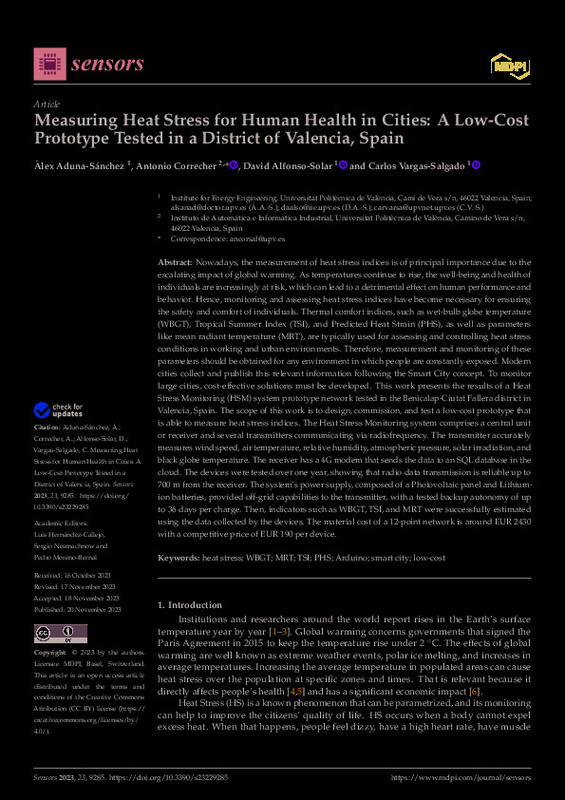JavaScript is disabled for your browser. Some features of this site may not work without it.
Buscar en RiuNet
Listar
Mi cuenta
Estadísticas
Ayuda RiuNet
Admin. UPV
Measuring Heat Stress for Human Health in Cities: A Low-Cost Prototype Tested in a District of Valencia, Spain
Mostrar el registro completo del ítem
Aduna-Sánchez, À.; Correcher Salvador, A.; Alfonso-Solar, D.; Vargas-Salgado, C. (2023). Measuring Heat Stress for Human Health in Cities: A Low-Cost Prototype Tested in a District of Valencia, Spain. Sensors. 23(22):1-23. https://doi.org/10.3390/s23229285
Por favor, use este identificador para citar o enlazar este ítem: http://hdl.handle.net/10251/201952
Ficheros en el ítem
Metadatos del ítem
| Título: | Measuring Heat Stress for Human Health in Cities: A Low-Cost Prototype Tested in a District of Valencia, Spain | |
| Autor: | Aduna-Sánchez, Àlex | |
| Entidad UPV: |
|
|
| Fecha difusión: |
|
|
| Resumen: |
[EN] Nowadays, the measurement of heat stress indices is of principal importance due to the escalating impact of global warming. As temperatures continue to rise, the well-being and health of individuals are increasingly ...[+]
|
|
| Palabras clave: |
|
|
| Derechos de uso: | Reconocimiento (by) | |
| Fuente: |
|
|
| DOI: |
|
|
| Editorial: |
|
|
| Versión del editor: | https://doi.org/10.3390/s23229285 | |
| Código del Proyecto: |
|
|
| Agradecimientos: |
This research was funded by the European Union¿s Horizon 2020 research and innovation program under the project Green Cities for Climate and Water Resilience, Sustainable Economic Growth, Healthy Citizens and Environments ...[+]
|
|
| Tipo: |
|









